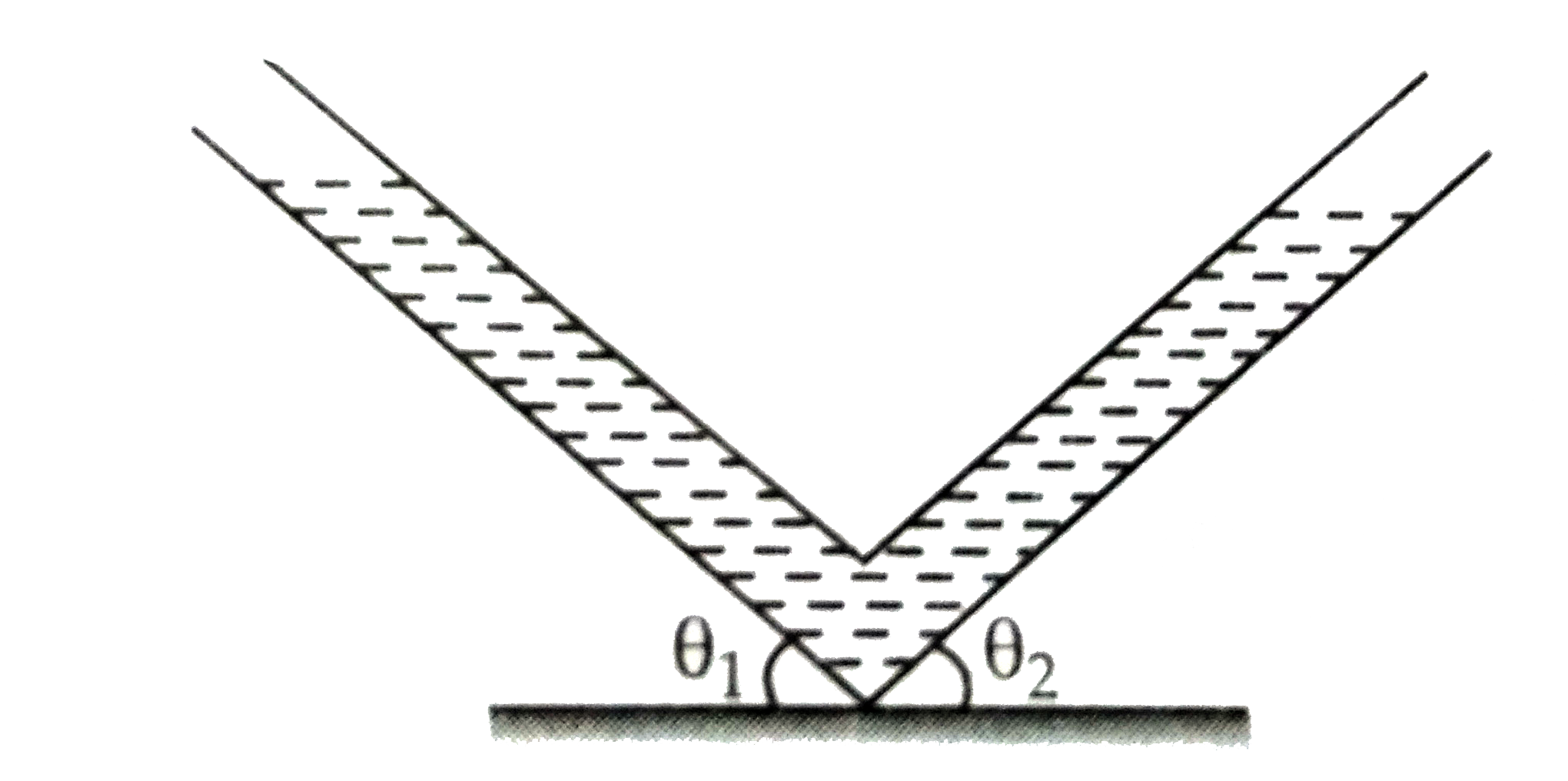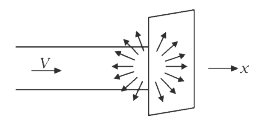An engine pumps a liquid of density 'd' continuously through a pipe of area of cross-section A. If the speed with which the liquid passes through a pipe is v, then force exerted on liquid.
Adv3/2
(1/2)adv
Adv2/2
Adv2
The correct Answer is:D
To solve the problem of finding the force exerted on a liquid being pumped through a pipe, we can follow these steps:
1. Understand the Given Information:
- Density of the liquid = d
- Area of cross-section of the pipe = A
- Speed of the liquid = v
2. Calculate the Volume Flow Rate:
- The volume of liquid flowing through the pipe per second can be calculated using the formula:
Volume flow rate=Area×Velocity=A×v
3. Calculate the Mass Flow Rate:
- The mass flow rate (m) can be calculated by multiplying the volume flow rate by the density of the liquid:
m=Volume flow rate×Density=(A×v)×d=A×v×d
4. Determine the Kinetic Energy per Second:
- The kinetic energy (KE) of the liquid flowing through the pipe can be expressed as:
KE=12mv2
- Substituting the mass flow rate into the kinetic energy equation gives:
KE=12(A×v×d)v2
5. Simplify the Expression:
- This simplifies to:
KE=12Adv3
6. Conclusion:
- The force exerted on the liquid can be related to the change in momentum or the kinetic energy. In this case, the force exerted on the liquid is given by:
F=12Adv3
Final Answer:
The force exerted on the liquid is:
F=12Adv3
- Density of the liquid = d
- Area of cross-section of the pipe = A
- Speed of the liquid = v
- The volume of liquid flowing through the pipe per second can be calculated using the formula:
Volume flow rate=Area×Velocity=A×v
- The mass flow rate (m) can be calculated by multiplying the volume flow rate by the density of the liquid:
m=Volume flow rate×Density=(A×v)×d=A×v×d
- The kinetic energy (KE) of the liquid flowing through the pipe can be expressed as:
KE=12mv2
- Substituting the mass flow rate into the kinetic energy equation gives:
KE=12(A×v×d)v2
- This simplifies to:
KE=12Adv3
- The force exerted on the liquid can be related to the change in momentum or the kinetic energy. In this case, the force exerted on the liquid is given by:
F=12Adv3
The force exerted on the liquid is:
F=12Adv3
Similar Questions
An engine pumps liquid of density ρ continuously through a pipe of cross-section area A. If the speed with which liquid passes through the pipe is v, then the rate at which kinetic energy is being imparted to the liquid by the pump is
View SolutionA pump is used to pump a liquid of density ρ continuously through a pipe of cross, sectional area A. If liquid is flowing with speed v, then average power of pump is
View SolutionA pump is used to pump a liquid of density ρ continuously through a pipe of cross, sectional area A. If liquid is flowing with speed v, then average power of pump is
View SolutionA liquid of density ρ is flowing with a speed v through a pipe of cross sectional area A. The pipe is bent in the shape of a right angles as shown. What force should be exerted on the pipe at the corner to keep it fixed?

View SolutionA liquid is flowing through a pipe of non-uniform cross-section. At a point where area of cross-section of the pipe is less, match the following columns.

View SolutionA non viscous liquid of density ρ is filled in a tube with A as the area of cross section, as shown in the figure. If the liquid is slightly depressed in one of the arms, the liquid column oscillates with a frequency

View SolutionA liquid of density ρ is flowing with a speed V through a pipe of cross sectional area A. What force does the liquid stream exert on wall in x direction if it splashes in the form of a circle after it hits the wall?

View SolutionA viscous liquid flows through a horizontal pipe of varying cross-sectional area. Identify the option which correctly represents the variation of height of rise of liquid in each vertical tube
View SolutionA liquid of density p is coming out of a hose pipe of radius a with horizontal speed υ and hits a mesh . 50 % of the liquid passes through the mesh unaffected . 25 % comes back with the same speed .The resultant pressure on the mesh will be:
View SolutionAn ideal fluid flows through a pipe of circular cross-section made of two sections with diameters 2.5cm and 3.75cm. The ratio of the velocities in the two pipes is
View Solution
